3 mitos sobre la meditación sentada - 3 myths about sitting meditation [ES/EN]
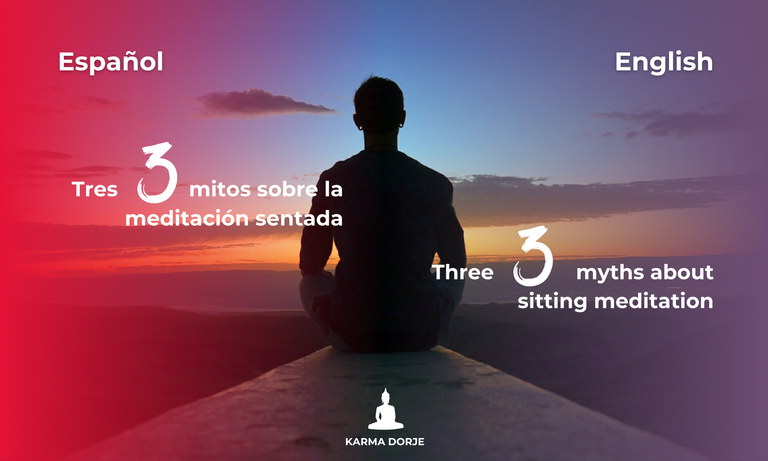
ESPAÑOL
El campo de la meditación siempre está repleto de misterio e incertidumbre acerca de su realización, y la verdad es que es una práctica bastante más simple que todo el misticismo del que se ha visto rodeada por años.
Yo mismo, por ejemplo, en mis años previos a meditar, siempre asociaba meditar con: cruzar piernas, estirar los brazos juntando índice y pulgares y esbozar la silaba OOOOOOM sin saber qué era lo que estaba haciendo. Quizás escuchado, en forma de burla o desconocimiento por algún adulto durante la niñez, y me quedó grabado sin interesarme por ahondar más al respecto.
Con los años y la experiencia, descubrí cuánto de todo eso era cierto y aplicable y que otras cosas no eran ni siquiera necesarias para realizar una meditación.
Hoy, no quiero hablar de mil mitos sobre la meditación, pero si quiero mencionar los 3 mitos más comunes y fundamentales que escuchamos sobre esta práctica milenaria, y que en el caso del primero en particular, nos dificulta muchísimo concebir esta actividad como algo realmente sencillo y posible para todos los seres humanos, sin excepción.
Número uno:

La verdad al respecto es que la meditación no se trata sobre apagar o blanquear la mente de cualquier pensamiento que está sucediendo en ella. La mente contiene pensamientos, punto.
La meditación implica observar los pensamientos sin aferrarse a ellos ni realizar juicios de los mismos.
Si consideramos la mente como un río, podemos entender que el río en si mismo contiene agua y observarlo no significa vaciarlo de la misma. Sin embargo, observarlo sin aferrarse ni enjuiciarlo sería: sentarse frente al río y ver el agua pasar sin pensar: - ¡Uy! Que limpia o sucia está esta agua.
La meta es cultivar la consciencia y la atención plena.
Número dos:

La verdad, la meditación hoy en día no puede limitarse a un contexto únicamente religioso o espiritual. Antiguamente solo quienes estaban relacionados con el mundo espiritual o religioso tenían este conocimiento y claramente su relación era muy estrecha pero hoy en día sabemos que es una práctica que puede realizarse sin dichas connotaciones.
Practicar la meditación de manera secular es posible y beneficiar a cualquier ser humano, sin importar su creencia religiosa.
Es una herramienta que ayuda muchísimo, en poco tiempo, a manejar el estrés, la sobrecarga o exceso de pensamiento, y al cultivo del bienestar de la mente.
Básicamente; si puedes respirar, puedes meditar.
Número tres:
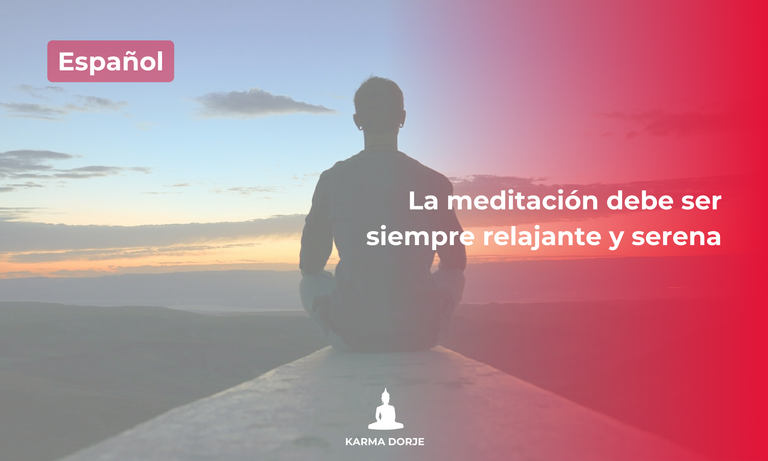
Esta es la más compleja de explicar para mí, y se debe a que creo que esto no es tan fácil de entenderlo hasta que lo hemos experimentado, inclusive por años.
Siempre hemos asociados las prácticas de Yoga y Meditación con que deben ser relajantes y serenas, porque realmente traen como consecuencia esos estados. Sin embargo, durante los procesos de la práctica, esto no necesariamente ocurre.
Si pensamos en la meditación como un proceso de limpieza y purificación de los contenidos de la mente (pensamientos), notamos que en dicho proceso habrá momentos incomodos; física, emocional y psicológicamente, que no permitirán que estemos del todo relajados y serenos. Sin embargo, mientras ocurren, no deberíamos salir huyendo y evadiéndolos, sino al contrario enfrentarlos para que podamos trascenderlos y así no vuelvan a tener el mismo poder o efecto sobre nosotros.
Si huímos de lo que debemos enfrentar, esto se repetirá una y otra vez de mil maneras distintas, hasta que le hagamos frente.
Muchas por llegar hasta acá y haberme leído, espero pronto te animes a comenzar a meditar y si ya lo haces, espero que continúes con el mismo rigor y disciplina.
Siempre que desees consultar algo, estoy a la orden.

ENGLISH
The field of meditation is always replete with mystery and uncertainty about its realization, and the truth is that it is a much simpler practice than all the mysticism that has surrounded it for years.
I myself, for example, in my years before meditating, always associated meditating with: crossing my legs, stretching my arms with my index finger and thumbs together and sketching the syllable OOOOOOM without knowing what I was doing. Perhaps heard, in the form of mockery or ignorance by an adult during childhood, and it stuck with me without me being interested in delving deeper into it.
With the years and experience, I discovered how much of that was true and applicable and that other things were not even necessary to perform a meditation.
Today, I do not want to talk about a thousand myths about meditation, but I do want to mention the 3 most common and fundamental myths that we hear about this ancient practice, and that in the case of the first one in particular, makes it very difficult for us to conceive this activity as something really simple and possible for all human beings, without exception.
Number one:
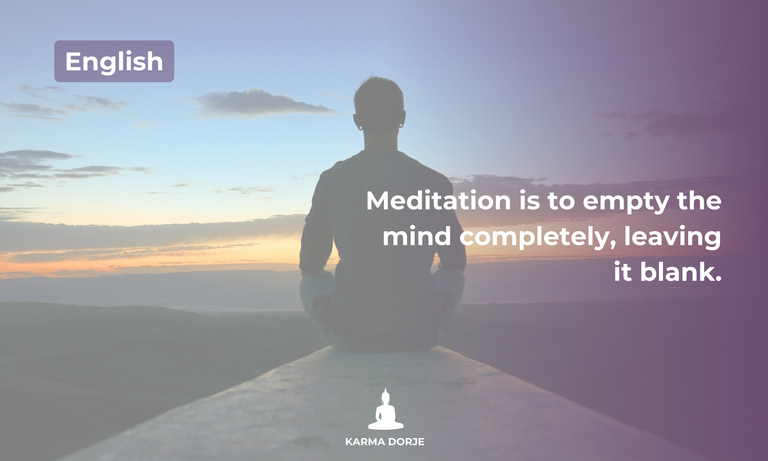
The truth of the matter is that meditation is not about shutting off or blanking the mind of whatever thoughts are going on in it. The mind contains thoughts, that´s it.
Meditation involves observing thoughts without holding on to them or making judgments of them.
If we consider the mind as a river, we can understand that the river itself contains water and observing it does not mean emptying it of water. However, to observe it without clinging to it or judging it would be: to sit in front of the river and watch the water pass by without thinking: - "Oops, how clean or dirty is this water!
The goal is to cultivate awareness and mindfulness.
Number two:
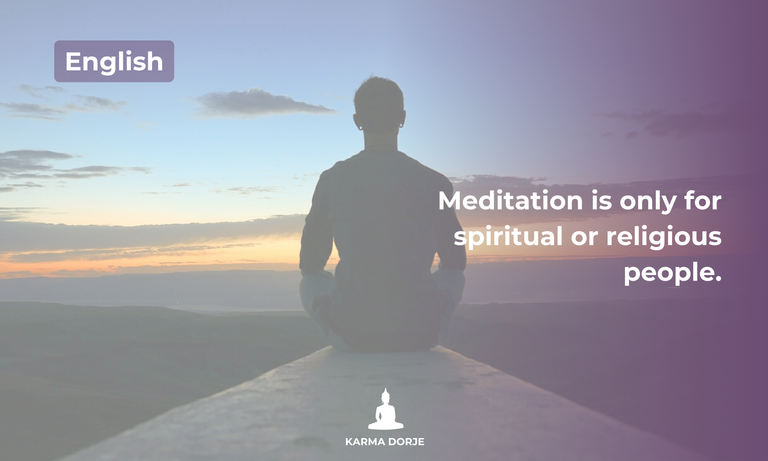
The truth is that meditation today cannot be limited to a solely religious or spiritual context. Formerly only those who were related to the spiritual or religious world had this knowledge and clearly their relationship was very close but today we know that it is a practice that can be done without such connotations.
Practicing meditation in a secular way is possible and can benefit any human being, regardless of their religious beliefs.
It is a tool that helps a lot, in a short time, to manage stress, overload or overthinking, and to cultivate the well-being of the mind.
Basically; if you can breathe, you can meditate.
Number three:
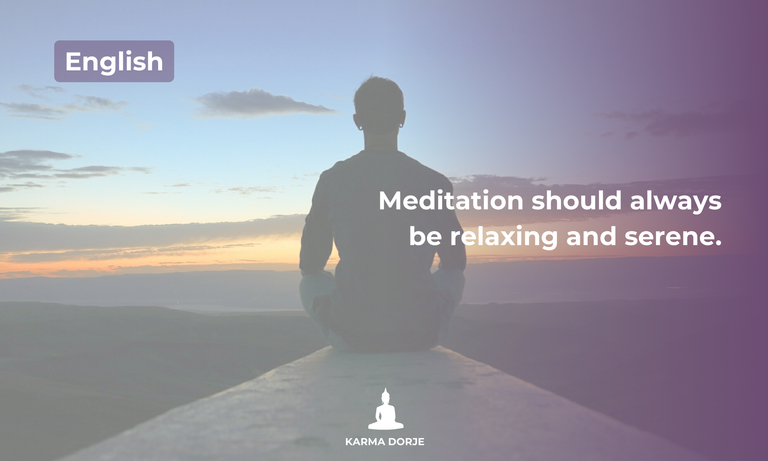
This is the most complex to explain for me, and it is because I believe that this is not so easy to understand until we have experienced it, even for years.
We have always associated Yoga and Meditation practices with being relaxing and serene, because they really bring about those states. However, during the processes of practice, this does not necessarily occur.
If we think of meditation as a process of cleansing and purification of the contents of the mind (thoughts), we notice that in this process there will be uncomfortable moments; physically, emotionally and psychologically, that will not allow us to be completely relaxed and serene. However, while they occur, we should not run away and avoid them, but on the contrary face them so that we can transcend them and so they will not have the same power or effect on us again.
If we run away from what we must face, it will repeat itself again and again in a thousand different ways, until we face it.
I hope you will soon be encouraged to start meditating and if you already do, I hope you will continue with the same rigor and discipline.
Whenever you want to consult something, I am at your service.

Soy Julio Cesar Arvelo, practicante y profesor de Ashtanga Yoga y Meditación.
- Si te gustó esta publicación y quieres seguir leyéndome, te invito a seguirme.
- Todas las imágenes han sido creada y editadas por mi, con Canva.com
-Traducidas al ingles a través de DeepL Traslator
I am Julio Cesar Arvelo, practitioner and teacher of Ashtanga Yoga and Meditation.
If you liked this post and want to keep reading me, welcome to follow me.
All images have been created and edited by me, with Canva.com.
Translated to English through DeepL Traslator.
Mi redes sociales:

Este es un tema muy interesante, la verdad me gustaría aprender a meditar. Gracias por compartir este conocimiento.
@tipu curate 8
Upvoted 👌 (Mana: 0/75) Liquid rewards.
Muchas gracias! Mi proximo posteo será una meditación por video.
Muy buen post. He experimentado esos tres mitos a los que te refieres. Al principio me costaba meditar en parte de uno a mis creencias erróneas sobre el proceso y sus efectos. Lo que me llama más la atencion sobre tu post es que con la práctica experimente lo que refieres sobre el tercer mito.
Me frustraba pq esperaba ese estado de "paz" durante el proceso. El tener la mente en blanco, pero no lo lograba, ni lo logro hoy. Sin embargo, comencé a notar los cambios en mi estado de ser a lo largo del día, fuera de la práctica meditativa. Comencé inconscientemente a notar que, cuando experimento tensión mi respiración está desequilibrada, por ejemplo. Entonces me enfoco en corregirla y eso contribuye a limar la tensión.
Yo lo que mas he descubierto durante estos años, es que la respiración es mi mayor maestra.
En ella está reflejada mi mente, si la observo atentamente, observo mi mente.
Y como tu dices; al corregirla, también lo hace tu mente.
Un abrazo!
Meditar no es nada fácil, yo hace tiempo le había agarrado la práctica, pero cuando la ansiedad te domina es complicado oír esos pensamientos y saber convivir con ellos 😅, son tantos que te desconcentras. Espero volver a agarrar la práctica porque meditar me trajo muchos beneficios en su momento. Saludos, @karmadorje 🤗.